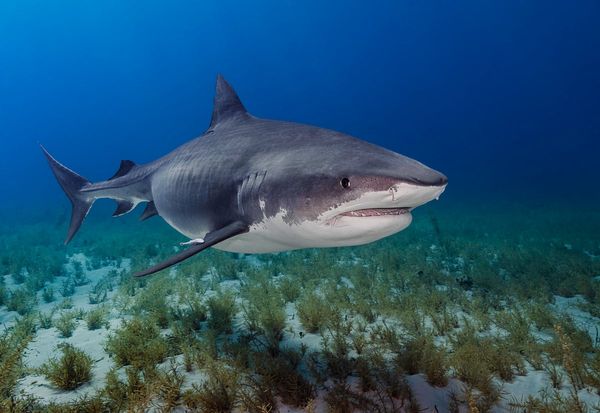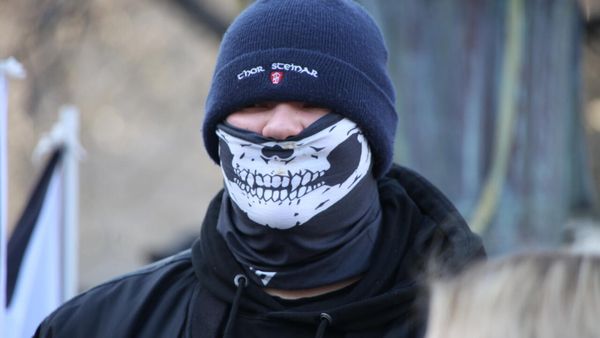Nunami Sculthorpe-Green started leading tours telling the stories of her ancestors because she wanted those stories to be told.
"I grew up in lutruwita/Tasmania in the 90s and early 2000s and I didn't see our people's stories represented anywhere," the palawa and Warlpiri woman said.
"I felt that the truth of our history wasn't being told and our people weren't being appreciated and recognised for all that we are and all that we bring with our culture and our stories."
Ms Sculthorpe-Green has been running her takara nipaluna (palawa kani for Walking Hobart) tour since early this year, and has recently added mumara patrula (Wood for the Fire), a guided walk along a coastal trail at Kettering that tells the stories of legendary Aboriginal figures from the region.
"I cannot keep up with the demand and it's really given me a more positive outlook on our state and the people that come [here]," she said.
"People do want to know our stories, they do want to walk with us and understand our history and culture from us ourselves."
Last week, her efforts were recognised when she won Young Achiever for 2022 at the Tasmanian Tourism Awards.
There are some other Aboriginal tourism offerings in Tasmania — including the state's first Aboriginal-owned and operated tourism venture, the Wukalina Walk — but it is a recognised gap in the state's tourism market.
One place where the state government would like to see more Aboriginal tourism offerings is in the Tasmanian Wilderness World Heritage Area (TWWHA) — 1.5 million hectares taking in the Southwest, Cradle Mountain-Lake St Clair, Franklin-Gordon Wild Rivers, Mount Field, Hartz Mountains and Mole Creek Karst national parks.
There is an Aboriginal cultural walk at Melaleuca in the south-west and, according to a 2015 Parks and Wildlife Service evaluation report, 92 per cent of those who visited it said the walk enhanced their understanding of Tasmania's Aboriginal heritage.
The government's tourism master plan for the TWWHA, released last year, states that there is "a significant lack of opportunities for visitors to engage and learn about the Aboriginal cultural values of the TWWHA in an authentic experience, unlike its natural values, which are well documented and understood".
"It's important for people to remember that the TWWHA was listed for both its natural values, but also its cultural values — specifically Aboriginal cultural values — so it needs to be Aboriginal culture that's really highlighted in any tourism offerings.
"But I think most importantly it has to be led by Aboriginal people, it has to be self-determined, so it can't be for the government to hand-pick how they want to go about it, they can't shut our people out of the processes, as they have been doing, if they want it to be successful," Ms Sculthorpe-Green said.
"A big opportunity open for the government, and for our people, is perhaps to work together and the government can really invest in building the capacity for our people to deliver these tourism opportunities.
"We might not have something polished ready to go immediately, but we do have ideas and it is our heritage."
The state government is preparing an interpretation guide for the presentation of Aboriginal cultural values in the TWWHA. A draft version is expected to be released in coming months.
Desmond Campbell, chief executive of Welcome to Country — a not-for-profit organisation that promotes and supports Indigenous products and tourism experiences — said demand for Aboriginal tourism experiences was increasing in all states and territories.
"In 2019, 1.4 million international visitors, or 17 per cent, participated in Indigenous tourism across Australia," Mr Campbell said.
He said the number of international visitors participating in Indigenous tourism had increased by 6 per cent every year since 2010.
About 1 million domestic tourists participated in Indigenous tourism in 2019, and that figure has also been increasing.
Mr Campbell said that in places where governments provided support to Indigenous tourism ventures, successful businesses were being established.
"In some states such as Tasmania, we're seeing there could be a lot more support in the offerings of Indigenous tourism."
Mr Campbell said the Tasmanian government's aim to increase Aboriginal tourism in the TWWHA was an important opportunity.
"Tasmania has such a great, wide, vast wilderness that the local Aboriginal palawa people still are connected with through their culture," he said.
"It just seems like such a great opportunity to be able to work with [local] elders."
Mr Campbell said Indigenous tourism was also an important opportunity for Aboriginal people "to continue to practice their culture and stay connected, or reconnect, to their culture" and for others to learn about the world's oldest living culture.
For Ms Sculthorpe-Green, sharing her people's stories with tour groups — 90 per cent of whom are Tasmanians hungry to learn more about their island's history — is her way of bringing those stories into the public eye.
"I hope our future generations will not even know that there was a time when our stories were hidden from public space, I hope that really changes," she said.







